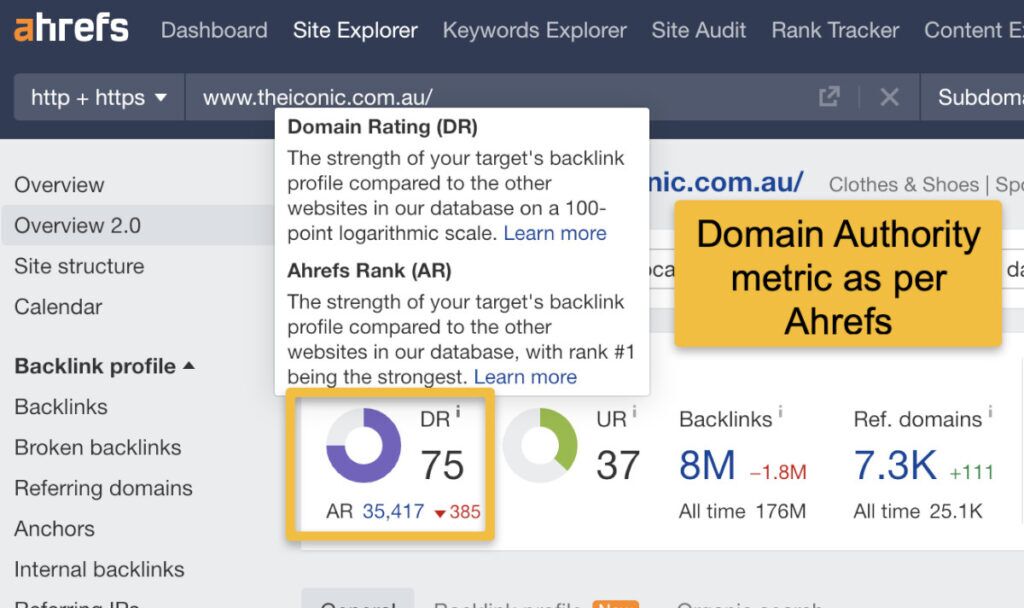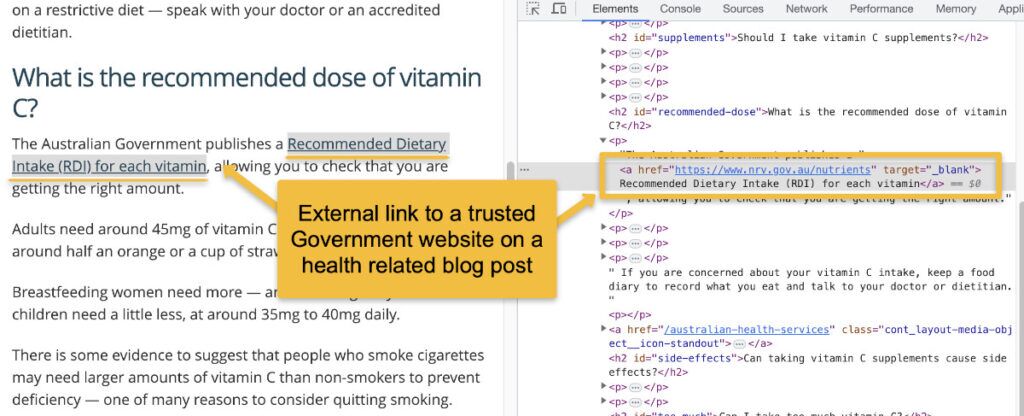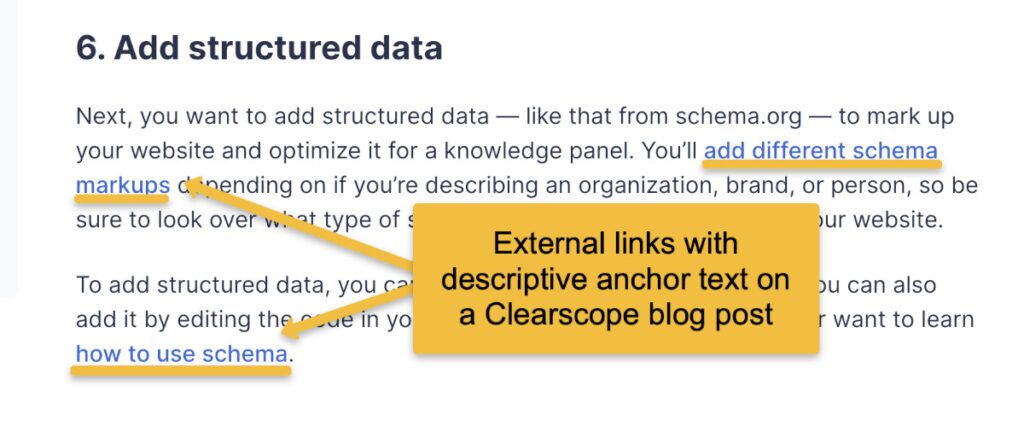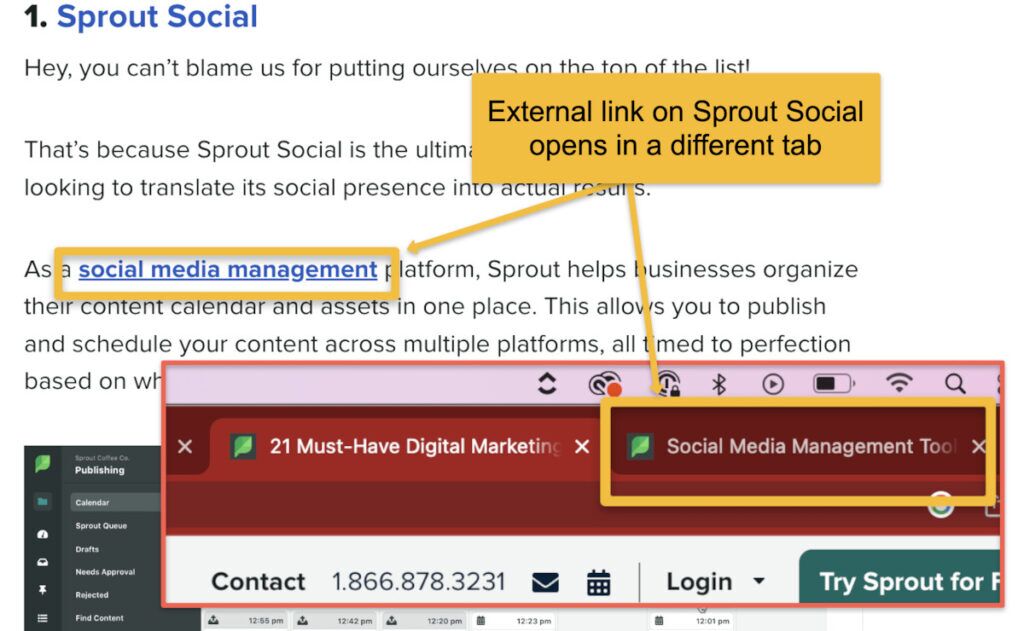Using external links means creating hyperlinks that direct from one page to a different webpage of another site. They are not the same as internal links that connect to pages within the same site. Therefore, a proper linking strategy is a must for both Search Engine Optimization [SEO] and user experience. The role of outbound or external links is paramount in creating a strong link web that includes your entire site. The addition of these links in your text can let your site enjoy numerous benefits, even if many firms are still reluctant to redirect their customers to a different site.
Nevertheless, this is what Google prefers. The leader search engine wishes you to provide top-quality content and to share any possible info… even if it is on someone else’s server. In this post, we will explore the concept of external links, their merits, and the strategies of their effective incorporation into your site.
What is an external link?
Unlike internal linking, which consists of links leading users to another page in your domain, external links are links that you incorporate into the content of your site to guide users to additional resources related to the topic. They redirect to a completely different domain and carry your audience away from your site.
To illustrate, if you are curious to learn more about what external links are, read this article from Moz. The practice of incorporating external links into your content in the right places can turn out to be a powerful means of getting backlinks. Backlinks are links from other websites that return the users to your website. When you place external links on your website, you are making your content more credible, thus, other websites are more inclined to link to your website for a specific topic. The accumulation of backlinks results in the increase of your website’s authority. Let’s take a real-life example for better understanding.
Imagine you are the owner of a bookstore, and a customer enters asking for a particular book which you do not carry. You have two choices. One is to tell them that you don’t have the book, and the other is to give them the directions to another bookstore you are aware of that does have it. While guiding them to the other store means no sale for your store, you have still provided the customer with valuable information which makes them more likely to come back to your bookstore with any other book-related inquiries.
The same goes for your site. If a visitor accesses your site in search of information you don’t have, and you guide them correctly, it means they’ll be more inclined to remember you the next time they need information that’s relevant.
What are the benefits of external linking?
While some businesses hesitate to send customers away, external links offer significant advantages. For example, linking to reputable sources builds credibility and trust. It also improves SEO, as search engines favor sites that provide valuable resources and context, ultimately boosting visibility.
You add relevancy to your website
The primary advantage of incorporating outbound links is relevance. Although Google (and other search engines) primarily consider incoming backlinks to your site as an indicator of relevance, they also take into account the links leaving your site. For instance, if a lawyer had a page dedicated to divorce procedures and referenced a government page covering the same topic, the two would be connected by relevance.
Internal Linking vs External Linking
Types of External Links
The main types of external links include:
- Follow Links
- Nofollow Links
The most common styles of external links are: Follow links Nofollow Links Follow and Nofollow links are essential parts in external links. Whereas follow links give a signal to Google to pass link juice to the linked site, a nofollow link on the outside prevents Google from sending ranking signals to the URL.
To put it in a more simple way, nofollow link means, hey Google, don’t count this link as a “vote” for my site, and I don’t fully trust it. It also means that the user experience of that external link is more important to you than the search engine or the site you’re linking to experiencing a lot of benefits. Just add a nofollow attribute [rel=”nofollow”]. Dofollow links, What are they?
Why is External Linking important?
External linking is good for SEO and user experience as it gives users hints of the context in which they are reading and it can also drive them to other sources, while you can also get some SEO juice by linking to strong pages.
However, there are 3 main advantages of using external links:
- Offer Additional Information
- Gain Credibility
- Connect With Other Websites

External linking and internal linking are similar in one way, that both can be utilized to link out to more information within the content of your site. There are dozens of ways external links help users and search engines get more information. So, if a content is about ‘paint ideas for bedroom’, the page can link out externally to ‘types of paint’ to help a user make a decision, and also to help Google understand your content. External links are also frequently employed to back up statistics, and the results of surveys with the ‘source’ which conducted them. A third-party link to the source can increase your site’s credibility and may even encourage visitors to linger a little longer.
Develop Credibility
If you are linking your web page to high-quality external sites, it also makes your site more trustworthy. We have already discussed how links to external websites can help users find related information and content. In the same way, creating great content and then linking out to other great content, makes your own site more credible to both the user and the search engine. In terms of SEO, it’s the same as link equity that gets passed via internal linking, but here, the quality of the external link might actually help your site. Linked sites pass link equity, or “link juice,” from one to the other . Google’s PageRank algorithm assigns different weights to different sites, based on the presence of backlinks. Link equity is when that authority is propagated to other sites via external linking.
Build Connections with other Websites
As external link efforts on your part provide backlinks to other websites, links are fantastic for building connections with other sites and enhancing your reputation. You might be able to get some good backlinks for yourself in the process, which is a great source of link juice and can help increase your domain authority. While domain authority is not a ranking factor according to Google, it is a good measure of how well your site will be able to rank in the SERPs compared to your competitors. Generally, they like to link out to high domain authority sites, and gaining backlinks from them is vital for SEO success and bringing in traffic.

How to Use External Links for SEO
We’ve covered the benefits of external linking. Now consider using these best practices for your external link building strategy.
1. Link Relevant & Reputable Websites
Since sites use external links to offer related information or sources of information for their visitors, you want to make sure that any website links you include are relevant to your content and not just included for the sake of adding an external link. Ditto for search engines. Because Google looks at your external links to help it understand what your content is about, make sure you’re linking to high authority sites.

2. Use Descriptive Anchor Text
As the external links are mostly contextual or ‘in-text links’, ensure they also come with an optimized anchor text, and they should naturally fit in your content. This involves using text to explain what the link is for, rather than using non-descriptive text such as ‘click here’.Certainly, having “optimized” anchor text doesn’t mean it’s lengthy. Keep it short and sweet so you don’t end up looking like spam with massive hyperlinked sentences. 
3. Avoid Linking to Competitors
When you want to link to websites from your industry, you can be tempted to link to your competitors’ sites, particularly when they have content that supports your own. Unless the link points to a well-established piece of research or study, you should treat this as a no-go. You are sending your target customers to the competing sites when you link to your competitors as they click on your external links. You can also lose traffic and leads in the process because you’re giving your customers options other than your own site. The best practice is to stick to sites from the industry, but not those who sell exactly what you sell. If you’re a paper store, for instance, rather than link to a direct competitor, link to related content from a printing company’s site.
4. Skip the Money Pages
Your money pages are the pages where you expect your conversions to come from. For an online store, this could be the product pages and categories. Since these are also typically the last step of a customer’s journey, you want to hold users on the page until they convert. Including external links here could risk your readers’ attention to other sites and potentially lead you to lose conversion rates. Instead, limit your external links to blog post and other content-heavy pages where the links can help – and won’t take revenue out of your sales coffers.
External Link Defined
- An external link is a hyperlink that leads to a website other than the one the link is on. Leading SEO authorities agree that external links are the most important source of ranking power for a web page.
- Unlike internal links, external links pass link equity, or ranking power, differently. These links are treated by search engines as third-party validation or votes that contribute to the ranking of the content they’re linking to.
- It’s worthwhile noting that white hat SEO believers do NOT consider the “title” attribute in a link to have any real bearing on the rankings.
An example of what an external link looks like is as follows in HTML code:
Check out our recent post for all the latest SEO updates.
External links are essential in determining the quality and relevance of a web page for a search engine.
There are two primary reasons why external links are considered important:
- Popularity: In contrast to the secretive nature of website traffic statistics, external links provide a more consistent and quantifiable measure of a web page’s popularity. Although traffic information is usually hidden in private server logs, external links are public and can be harvested. This allows external links to be used as a dependable measure of how popular a particular web page is. This popularity measure, which is similar in concept to the toolbar PageRank, is then combined with relevancy factors to improve the search engine results for a query.
- Relevancy: External links are one of the signals that search engines rely on to determine how relevant a web page is. The anchor text within these links is normally written by humans who have a better understanding of the content of the Web Page than the computers. Often this anchor text is a brief summary of the title or content of the page to which it links, or it may even be a URL. In addition, the domains referenced in links also provide search engines with useful relevance information. Because links tend to link to similar things, they help search engines create knowledge hubs on the web, which in turn help search engines confirm how important a web document is.
SEO Best Practices
Target keywords– Accurately determining target keywords is a crucial part of writing your on-page content to be search engine friendly. What this means is that the end result of this on-page optimization process is to rank better for keywords that are very similar to what your page is all about, increasing your rankings in the search engines.
In order to do so, you have to perform an intense keyword research. It means researching and analyzing the words and phrases that people use to search the internet for the type of content you offer on your website. Knowing the vocabulary and the questions your audience uses will help you adapt your content to better match the needs of your users.
Keyword research also tells you about the popularity and competition of each of those terms. This is useful information to help you know which keywords you should focus on in your content strategy.
Link to Relevant Sources
Having some external links on your page is good for your content, but you want to add them with purpose rather than add them just to have them. Make sure any external links that you add are adding some value to your content and not just taking the reader away from your page for no good reason.
Good external links are links that take the user to supplementary content that supports your main points and provides more context for them. Visit their website Once you find worthy link destinations such as statistics, research studies, infographics, or videos to substantiate your points or provide more information, visit their site.
As Google aims to display the most relevant results for every query, it is even more important to link to websites in your niche. This not only helps Google understand what your content is because the user better understand what they are reading leading to a richer and more Australian Shine Page experience, but it also creates a better overall online experience.
Optimize the Title Tag
The title tag, which is shown prominently in the Search Engine Results Page (SERP), is very important in communicating the topic of your page to Google and attracting users to visit your site. It is Wrapped in HTML tags with this format:
It was described that the title tag is one of the most significant aspects for on-page optimization that needs attention. You should also include your main keyword for the page, ideally towards the beginning This tells Google what the main search term is that you want to rank for.
Because you can also use secondary keywords, just be sure you don’t overdo it and engage in unnatural behaviour that is known as “keyword stuffing.” This is a result of too many keywords inserted, then the look like spam, which can be bad for SEO, and user experience. The best title tag optimization should be a tradeoff between readability, relevance and avoiding spam for a better SEO practice complexity.
You cannot underestimate the importance of the external links you add to your content. How professional and authoritative are the websites you are linking to when it comes to the question of trust involved in the content of your page for both your readers and search engines, especially Google. So its best to linkout your content to websites which are established in terms of authority or trust.
Linking to clickbait websites or sites with inferior content can negatively affect your reputation and SEO. Your readers may question the legitimacy of your content, and your site may be penalized by search engines for linking to unreliable sources.
The perfect example of superior external linking is our State of Content Marketing report, where we link out to numerous trustworthy sources in the business. This not only adds to the trustworthiness of the content but also adds benefits to SEO.
If you have to link to sites that maybe the source of your own distrust, consider adding rel=nofollow. The tag tells search engines that this is a link for citation or reference, but the link should not be treated like an endorsement.
Optimize Anchor Text
Anchor text is the text to be clicked, which is a hyperlink and which is very important in terms of communicating the information pertaining to the external site or page that is linked. This not only helps the users understand the content they are browsing through but also helps the search engines including Google, in giving the background of the linked page.
The optimization of the anchor text provides you with an added benefit of improving user experience in addition to the ranking of the linked page. This gives you an idea of the importance of optimizing your anchor text strategically to optimize search engine (SEO) functions.
5. Open External Links in New Tab
If you want visitors to linger on your site, but also have them click on external links within your site, the best method is to have those external links open in a new window, not the same one. In this way, even if the user get to a different website, they still have your site opened as the first tab, and can go back to it without much hassle. Taking your users off your site may result in fewer conversions, and a new tab is one way to prevent that. 
6. Limit Number of Links
The same is true with the number of outbound links in a page in seo, you need to have the right balance. Don’t feel compelled to bolus every other sentence on your page with an outbound link; limit it to ideas that really need one, or sources that really need to be quoted. When you start spamming your content with external links, you are not only causing some bad user experience, but you are also diluting the link equity that is passed to each link, and that impacts SEO. Rather than turning your pages into spam-fests, follow the best practice advice and limit each web page to a handful of quality links.
7. Steer Clear of Link Building Schemes
Link building is a delicate and sometimes murky art, and can fall victim to link schemes. Avoid Them When developing your SEO strategy, be sure to steer clear of those. They are artificially created attempts to boost your search rankings with links. Most link schemes violate Google’s spam policies and can lead to a penalty which drops your rankings and is terrible for SEO.These could include:
- Buying and selling links
- Exchanging too many links with a select few pages
- Using automated tools to generate links for your site
- Adding links from questionable and low quality directory sites
8. Audit External Links
If you already have external links on your site, consider running a site audit to analyze your current links. An audit can help you with the following:
- Identify your external nofollow links that should be dofollow and your dofollow links that should be nofollow.
- Detect non-descriptive anchor text, or missing anchor text and address these issues to help your SEO.
- Check for any broken links and replace them, or remove them if you can’t find suitable ones.
- You may check out site audit tools from both Ahrefs and SEMrush to perform a comprehensive external link check on your site.
| Question | Answer |
|---|---|
| What does “external linking” mean? | External linking means adding hyperlinks from your site to another website. For example, linking to https://getsocialguide.com is an external link. It helps readers explore related topics and adds credibility to your content. |
| Why are external links important for SEO? | They show search engines that your content is well-researched and connected to trustworthy sources. Quality external links can improve your site’s reputation and boost SEO indirectly. |
| Should I only link to high-authority websites? | Yes, always link to reliable, reputable websites. Linking to low-quality or spammy sites can harm your credibility and SEO. |
| How many external links should I use in one post? | Use them naturally. There’s no strict limit — include links only when they add real value or support your points. |
| Do external links pass SEO value to other websites? | Yes, regular (dofollow) links pass SEO value, also called “link juice.” If you want to avoid that, use rel="nofollow" in your link tag. |
| What’s the difference between “dofollow” and “nofollow” links? | Dofollow: Passes SEO credit to the linked page. Nofollow: Doesn’t pass SEO value but can still drive referral traffic. |
| Should I open external links in a new tab? | Yes. It’s better for user experience. Add target="_blank" to open links in a new browser tab. |
| Can external links hurt my SEO? | They can, if they go to irrelevant, broken, or spammy sites. Always check your external links to ensure they’re useful and trustworthy. |
| Do I need permission to link to another website? | No, as long as the content is public and you’re not copying or misusing it. Linking is allowed and often encouraged. |
| How can I track clicks on external links? | Use tools like Google Analytics or Tag Manager to monitor how many people click your outbound links. This helps you understand audience behavior. |
Summary
How to organize links internally and externally link out is a fundamental part of successful SEO. It on page SEOaling page not only for on page SEO, but is also necessary for user experience of the positive. For a clear it and quality external link strategy now, contact a professional seo agency and get the rankings and the traffic that the want. External linking is when one site links to another site. These are distinct from in-house links, which go to pages within the same website. A solid link strategy is a necessity, both for SEO and user experience.
External links, or outbound links, are key to a healthy link structure on your website. By sprinkling these in your content, it will help your website gain presence, but some companies just don’t love the idea of sending users to another domain. Nevertheless, Google it is. The Google search giant encourages you to create amazing content and tell users everything they need to know… even if they don’t find it on your site.

Leave a Reply